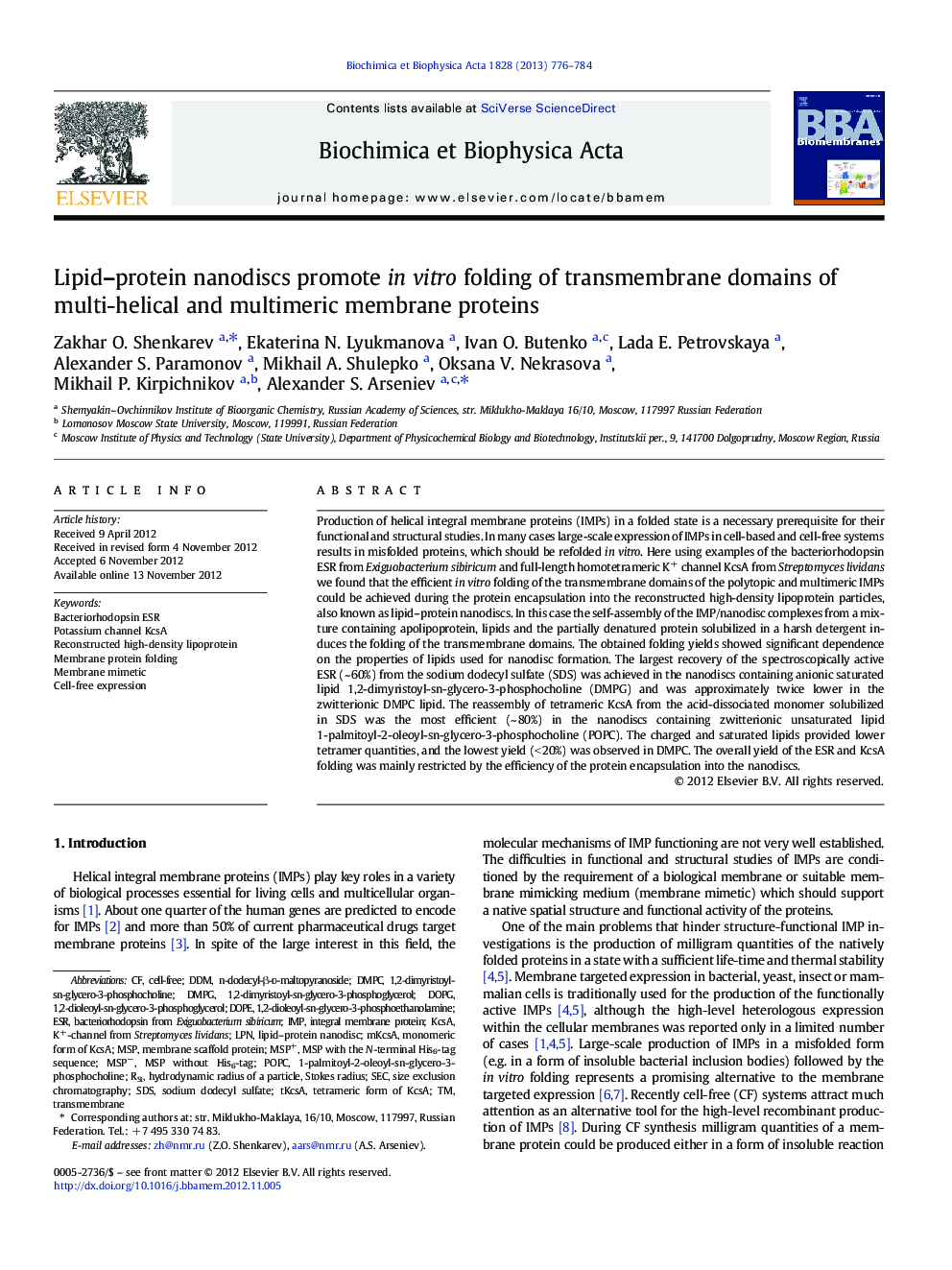| Article ID | Journal | Published Year | Pages | File Type |
|---|---|---|---|---|
| 1944416 | Biochimica et Biophysica Acta (BBA) - Biomembranes | 2013 | 9 Pages |
Production of helical integral membrane proteins (IMPs) in a folded state is a necessary prerequisite for their functional and structural studies. In many cases large-scale expression of IMPs in cell-based and cell-free systems results in misfolded proteins, which should be refolded in vitro. Here using examples of the bacteriorhodopsin ESR from Exiguobacterium sibiricum and full-length homotetrameric K+ channel KcsA from Streptomyces lividans we found that the efficient in vitro folding of the transmembrane domains of the polytopic and multimeric IMPs could be achieved during the protein encapsulation into the reconstructed high-density lipoprotein particles, also known as lipid–protein nanodiscs. In this case the self-assembly of the IMP/nanodisc complexes from a mixture containing apolipoprotein, lipids and the partially denatured protein solubilized in a harsh detergent induces the folding of the transmembrane domains. The obtained folding yields showed significant dependence on the properties of lipids used for nanodisc formation. The largest recovery of the spectroscopically active ESR (~ 60%) from the sodium dodecyl sulfate (SDS) was achieved in the nanodiscs containing anionic saturated lipid 1,2-dimyristoyl-sn-glycero-3-phosphocholine (DMPG) and was approximately twice lower in the zwitterionic DMPC lipid. The reassembly of tetrameric KcsA from the acid-dissociated monomer solubilized in SDS was the most efficient (~ 80%) in the nanodiscs containing zwitterionic unsaturated lipid 1-palmitoyl-2-oleoyl-sn-glycero-3-phosphocholine (POPC). The charged and saturated lipids provided lower tetramer quantities, and the lowest yield (< 20%) was observed in DMPC. The overall yield of the ESR and KcsA folding was mainly restricted by the efficiency of the protein encapsulation into the nanodiscs.
Graphical abstractFigure optionsDownload full-size imageDownload high-quality image (152 K)Download as PowerPoint slideHighlights► Protein/nanodisc complexes can be assembled using SDS denatured membrane proteins. ► Obtained complexes enclose the folded polytopic and multimeric membrane domains. ► Nanodiscs promote in vitro folding of the 7-helical bacteriorhodopsin ESR. ► Nanodiscs promote in vitro folding of the homotetrameric K+ channel KcsA. ► Optimization of lipid composition is required to achieve efficient folding
